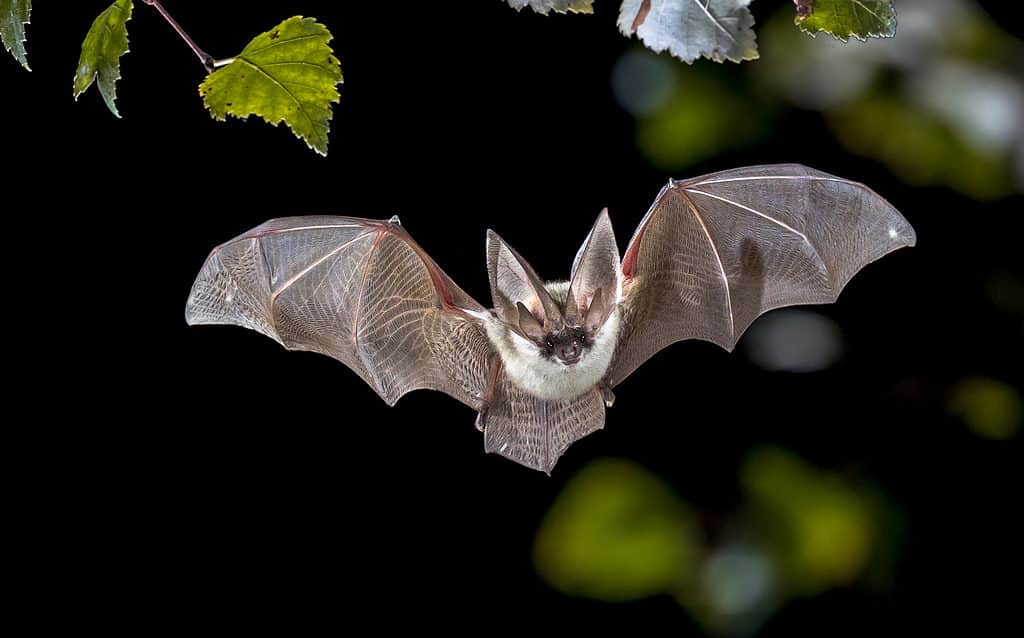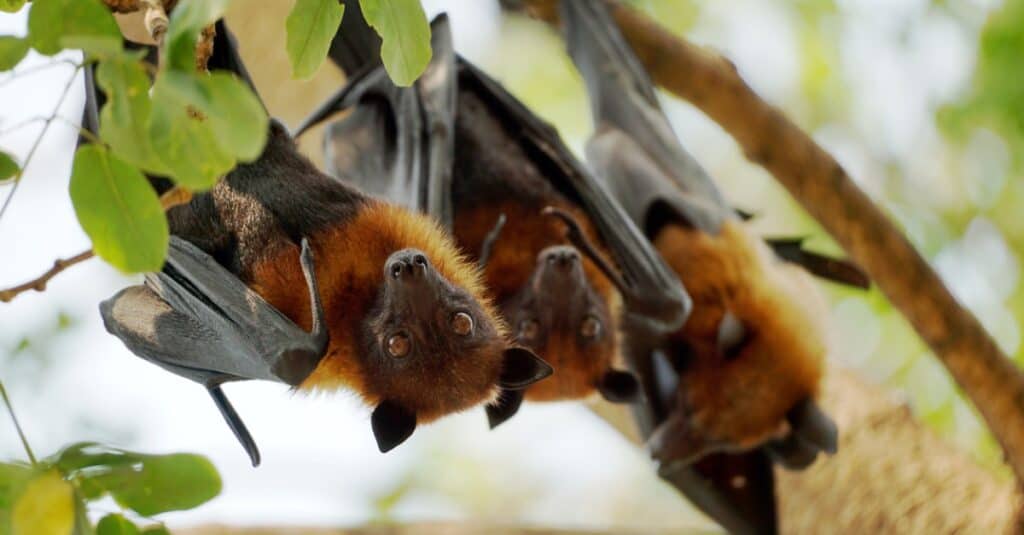Bats make up around 20% of all recognized mammal species worldwide, with over 1,400 species. This makes them the second largest order of mammals after rodents. Chiroptera is the group of mammals that includes bats. The megabats, who consume mostly fruit, and the microbats, which use echolocation, were the two traditional suborders. Newer research, however, lends credence to the idea that the order should be split in two: the megabats and some species of microbats would make up the Yinpterochiroptera, while the rest of the bats would make up the Yangochiroptera.
Their unique ability to fly is made possible by the adaptation of their forelimbs into wings, making them the only flying mammals in the animal kingdom. Bats are more agile fliers than birds because of the thin membrane or patagium that covers their extremely long, spread-out digits.

The grey long-eared bat (Plecotus austriacus) is a fairly large European bat. It has distinctive ears, long and with a distinctive fold. It hunts above woodland.
There are around 1,240 different species of bats, split between two suborders within the order Chiroptera: the Megachiroptera (large bats) and the Microchiroptera (little bats) (microbats). Bats are divided into two groups, or suborders, depending on their size and other distinguishing features.
Bats, of which there are thousands of species, can be found in every continent except Antarctica and together make up over a quarter of all animal species on Earth. Therefore, keeping tabs on the staggering number of bats across the globe is really challenging.
Heres some perspective, the Congress Avenue Bridge in Austin is the winter home to the biggest urban population of Mexican free-tailed bats in North America. There are about 1.5 million bats living in that area alone. This indicates there are probably billions of bats all across the globe.
Is The Bat Population Endangered?
Believe it or not, a little less than half of the bat species in the United States are either at imminent risk of extinction or experiencing a severe population decrease. The white-nose syndrome virus is one of the most dangerous dangers that bats face in the United States and Canada.
The loss of their habitats, food sources, and roosting locations, as well as the spread of disease, pollution, and poaching, have put many bat species at risk of extinction or susceptible to extinction around the world.
How Are Bats Beneficial to Our Ecosystem?
Like sloths, bats hang upside down to sleep.
Bats have both positive and negative effects on humankind. For example, bat guano, extracted from caverns, is used as a fertilizer. Bats eat a wide variety of insects, therefore their presence can lessen the impact of pesticides and other control methods. Across Asia and the Pacific Rim, they are consumed as a source of nourishment and are also a tourist attraction due to their abundance near human populations. Nonetheless, many people in the fruit-growing industry view fruit bats as unwanted pests.
While many bats eat insects, others are mostly frugivores or nectarivores (nectar-eaters). Tropical plants rely solely on bats to pollinate their flowers and spread their seeds throughout the environment. Vampire bats are one example of a creature that eats something besides insects. It is unclear whether bats use these behaviors to avoid predators, as most bats are nocturnal and many roost in caves or other refuges.
Are There Species Of Bats That Are Extinct?
Although the Desmodus draculae vampire bat became extinct in the Pleistocene, its progenitors may have survived throughout Central and South America into the early Holocene. It was thirty percent bigger than its modern relative, the common vampire bat, which was found in the same areas.
Another species is the Flat-headed Bat. In 1996, after 21 years without any scientific documentation of the species, the IUCN listed it as extinct. Only three specimens had been obtained since its existence was originally recorded in 1953.
A group of bat skeletons, recovered in Wyoming, are among the best preserved ever found. The fossils of Icaronycteris gunnelli, which date back more than 52 million years, provide a more in-depth look at the development of flying mammals.
What Would Happen If Bats Went Extinct?

Many ecosystems would eventually perish if bats weren’t around to disperse seeds and pollinate flowers.
Without bats to carry seeds and pollinate flowers, many ecosystems would eventually die out. Animals at the bottom of the food chain would starve to death without plants to provide them with food and cover. If these plants die off, it will have a domino effect on other species, eventually causing an ecosystem collapse.
Insects that only come out at night have only this one significant predator. Just one bat can consume 600–1,000 mosquitoes and other flying insects in just one hour. The extinction of bats would lead to an explosion of insects, which would destroy crops, harm the economy, and make people sick.







